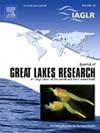Waterbird disease in the United States Laurentian Great Lakes under climate change
IF 2.4
3区 环境科学与生态学
Q3 ENVIRONMENTAL SCIENCES
引用次数: 0
Abstract
Since the turn of the 21st century, anecdotal evidence suggests that incidences of avian disease in natural populations in the Laurentian Great Lakes are increasing, with recent high-profile outbreaks including avian botulism in 2020 and avian influenza in 2022. To understand avian diseases, we must understand environmental associations and their relationships with disease outbreaks. Here, we conducted a scoping review on avian disease in the Laurentian Great Lakes using concept pools and key words, with specific attention to Green Bay, Lake Michigan and the endangered piping plover (Charadrius melodus). Green Bay represents a mesocosm of environmental stressors that continue to disrupt similar Great Lakes ecosystems, has a rich assemblage of waterbirds, including species of concern, and has intensive conservation investment and management. We sought to 1) synthesize the general knowledge of avian disease in the watershed, 2) understand how species’ biology may impact transmission, and 3) identify potential drivers (i.e. water quality, climate) that may influence avian disease patterns. We identified and provided descriptions and histories of three viruses (avian influenza, duck plague, and Newcastle disease), two bacteria (avian cholera and Salmonella), and two toxins (botulism types C and E). Overall, density dependent effects including carcass abundance, waterbird community, and population structure, as well as environmental conditions such as temperature, Cladophora presence, and water pH need to be considered for mitigating disease outbreaks. Future waterbird management will require rapid responses to contend with increasing disease outbreaks ostensibly linked to climate change, and requires incorporating climate change into disease modeling.
求助全文
约1分钟内获得全文
求助全文
来源期刊

Journal of Great Lakes Research
生物-海洋与淡水生物学
CiteScore
5.10
自引率
13.60%
发文量
178
审稿时长
6 months
期刊介绍:
Published six times per year, the Journal of Great Lakes Research is multidisciplinary in its coverage, publishing manuscripts on a wide range of theoretical and applied topics in the natural science fields of biology, chemistry, physics, geology, as well as social sciences of the large lakes of the world and their watersheds. Large lakes generally are considered as those lakes which have a mean surface area of >500 km2 (see Herdendorf, C.E. 1982. Large lakes of the world. J. Great Lakes Res. 8:379-412, for examples), although smaller lakes may be considered, especially if they are very deep. We also welcome contributions on saline lakes and research on estuarine waters where the results have application to large lakes.
 求助内容:
求助内容: 应助结果提醒方式:
应助结果提醒方式:


